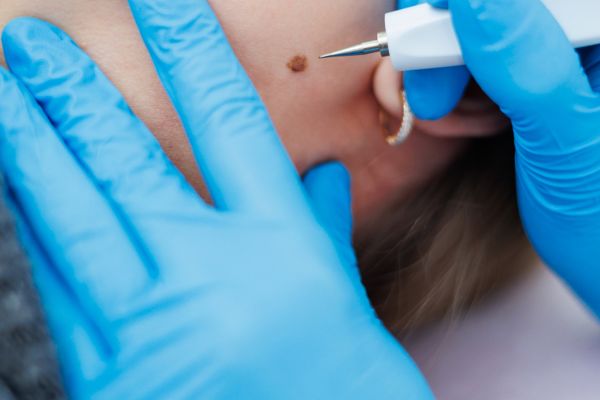Moles are a normal part of skin development. It often occurs in many people at an early age or during adolescence. In most cases, moles are harmless and do not change for several years. However, if a mole appears to indicate a medical complication that requires attention, this is not always the case.
Any drastic changes in your mole can be taken as a sign. A doctor should be consulted in some cases. This is because, in some cases, mole removal can become dangerous. You can prevent this by identifying the signs to look out for and acting early before a serious condition develops.
Recognising Unusual Changes
The initial process of diagnosing your mole is to monitor its appearance. A normal mole tends to be small, round or oval in shape and is the same throughout in colour. In case you notice any alteration in size, form or colour, it can be advisable to seek the assistance of a dermatologist.
Sudden changes can never be disregarded. A mole that has been wrapped up fast or darkens in colour as opposed to normal may be questionable. The sooner a mole alters itself, the more it becomes a necessity to have it checked.
Warning Signs to Watch Out For
Physicians commonly prescribe the practice of so-called ABCDE to diagnose alarming moles. This is to mean:
- Asymmetry: One side is not the same as the other.
- Border: The margins are jagged or fuzzy.
- Colour: There are several colours present in one mole.
- D-Sized: Diameter greater than 6mm across.
- Evolving: Any size, shape, or feel alteration.
The Role of Professional Check-Ups
Self-examination is also essential. However, it will be more effective when done by experts. Doctors who specialise in skin (dermatologists) have special tools to detect alterations that cannot be seen by ordinary sight. This helps determine whether a mole is benign or should be removed.
Regular skin exams are advised in the event of large numbers of moles, fair skin and familial history of skin cancers. An annual check is the best preventive measure, as it stops the occurrence of greater problems in the future. Early detection is a lifesaver, and it makes your skin healthier.
Deciding on Mole Removal
Doctors can advise mole removal where there are suspicious features of a mole. Removal may be performed because of cosmetic motives or irritation of the mole. The process is speedy and normally harmless if administered by a competent professional.
Depending on the type of mole and its location, different methods are adopted for surgical removal. Your physician will advise the most appropriate course for you. Once removed, it is usually tested in a lab to ascertain whether it is cancerous or harmless.
In conclusion, moles are a normal occurrence of the skin. However, care should be taken with changes, as they can cause harm to your health. Look out for abnormal growth, pain and colour changes. It is always safer to consult a medical expert when you are not quite sure of what you are doing.
Good skin care is not difficult to achieve. One-on-one support and frequent monitoring will enable you to identify issues at the initial stage. Being aware makes a difference in the long term because it will leave you with peace of mind and healthier skin.

